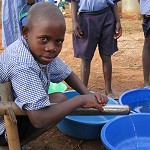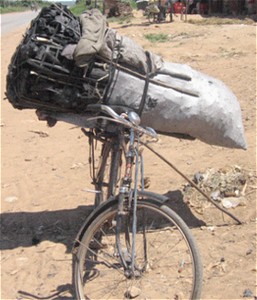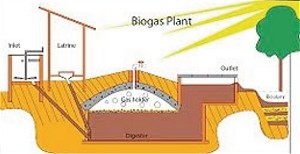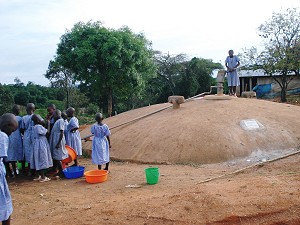 The aim of this project is to enable children in the UK to learn about how the schools we work with in Uganda use natural resources to provide sustainable energy to preserve the environment. To take this learning forward into their lives as children in the UK.
The aim of this project is to enable children in the UK to learn about how the schools we work with in Uganda use natural resources to provide sustainable energy to preserve the environment. To take this learning forward into their lives as children in the UK.
The norm in Uganda is for the schools to have no electricity, running clean water, or sanitation. For example - no flushing toilets. Also, cooking is done in the open by the fire, fuelled by wood. This collecting of wood will inevitably have an adverse affect on the rain-forests of Africa.
The two schools we have built in Uganda include St. Zoe's built in 1995 and the Good Shepherd built in 2007 set unique challenges but also exciting opportunities to try to resolve problems in an energy efficient way. Both these schools are developing into Eco Schools.
We are all becoming aware of global issues and the need to protect our environment and take care of our natural resources. We need to use our precious resources in the most sustainable way possible.
HUGS is at the forefront in the way we generate energy and deliver low carbon designs. We have BIOGAS to provide fuel for cooking. The fuel for biogas is made from agricultural or animal waste.
Cooking Biogas and the Forests
Sub Saharan Africa has a large population growth with ever increasing demand for fuel for cooking and heating. But people cannot just throw a switch and get electricity or turn a valve and get natural gas. They have to rely almost entirely upon wood and charcoal.
 Charcoal is produced by driving off the water in wood by slow heating in the absence of air. All over Uganda you will see people carrying huge sacks of charcoal and it is sold all along the main roads through the country. This is resulting in a dangerous reduction in forest and the desert lands of the Sahara are moving south and taking over good farmland and dead forest regions.
Charcoal is produced by driving off the water in wood by slow heating in the absence of air. All over Uganda you will see people carrying huge sacks of charcoal and it is sold all along the main roads through the country. This is resulting in a dangerous reduction in forest and the desert lands of the Sahara are moving south and taking over good farmland and dead forest regions.
One solution which has been used extensively in India and Pakistan is the use of methane gas for cooking. The methane, referred to as Biogas, is created naturally by the breakdown of vegetable and waste organic materials. The gas produced cannot be used for fueling motor cars but it can be used for cooking and for lighting.
Andrew Ssempiija Director of St Zoes has developed some real enthusiasm for this and with help from Makerere University he built the first school biogas plant in 2008. It meant rebuilding all the school toilets so that this waste plus other animal waste can gravity fall into two underground concrete digester tanks.
The gas starts to be created very quickly and St Zoes is now able to provide enough for nearly all the cooking for over 500 people each day from biogas. There is no smell and and the other byproduct from the biogas plant is a very good fertiliser liquid.
This illustration gives a good idea of how it works.


One of the special skills courses which have already started at St Zoe is to teach local farmers how to build their own domestic biogas plants and already we have done about 6 of these. The benefits to the ecology are clear, but the benefits to the people are in not having to buy charcoal or kerosene which are huge benefits.
Solar Panels
Solar panels absorb energy from the sun. It is known as photovoltaic technology and is said to be one of the most effective ways of producing electricity that is emission free. Photovoltaic works by allowing the sun's energy, in the form of photons, to pass through silicon cells, this is then converted into electricity.
In Uganda the introduction of solar panels into our schools has produced great benefits to the teachers and children. In Uganda it goes dark around 7pm and imagine what it is like to be in a place that has no street lighting and no lighting in any of the rooms. The only light comes from the moon. The lives of the adults and children was determined by the sun and when it went dark everyone had to use candles or torches. Imagine doing all your homework by torchlight. With the introduction of solar panels there is now sufficient light from the electricity generated to provide light in the classrooms, This means the children can complete their homework. Solar panels are however, a scarce commodity and the rooms where the children sleep still does not have any lighting.
Water
We have built a WATER tank to catch the rain so the children no longer have to walk for half a mile to collect water from the muddy pond and carry it back in large Jerry cans. (They often carry these on their heads).
The schools are now providing a model that other schools and universities are using as an example to follow to provide energy in an ecological and efficient way.
